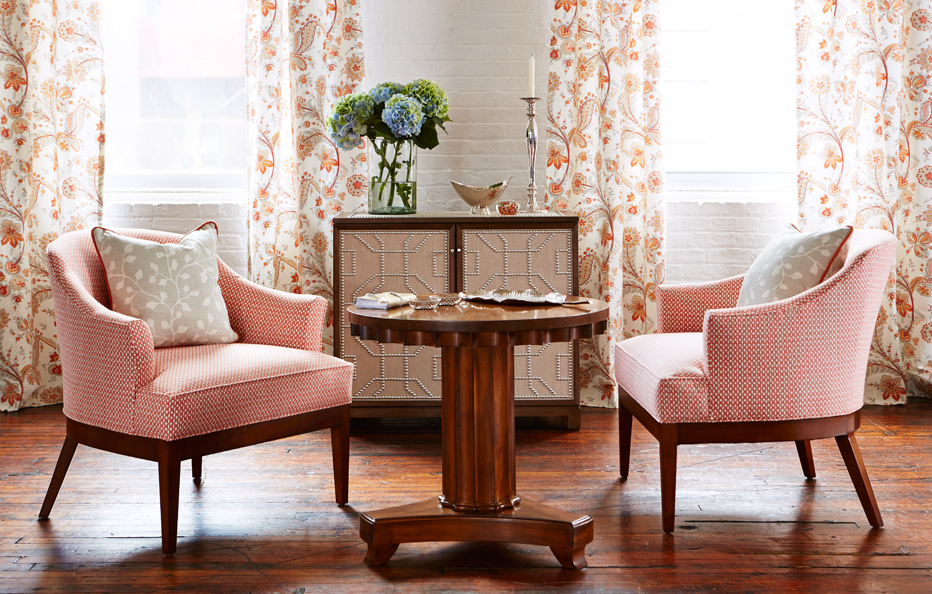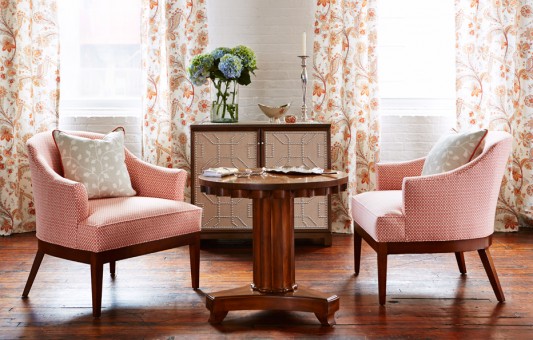
When new fabric books arrive at our studio doorstep, a designer feels like a 6 year old on Christmas morning. These compilations of textile are fodder for a designer’s imagination. These new textures and patterns will often hold the key to the perfect client presentation.
While the volume of options in the world of textiles can be daunting, the perfect fabric is often the inspiration for an entire room. When textures, patterns and colors are layered with an artist’s eye, a room can be transformed from average to magic.
To use designer fabrics to their fullest advantage, decide who you are in terms of style. Do your research by perusing magazines, visit websites such as Houzz, tour show houses and browse furniture stores to get a feel for the look that defines who you are. Collect these images and insights. A pattern should start developing and once that has been defined, you are on your way to a look that will last for you.
When selecting the right fabrics, the first thing I consider is mood. A playful fabric will be totally out of place in a sophisticated setting … even if the colors are dead on.
Beyond mood, consider color and the blend of patterns. Sheens and textures play a significant roll as well. You could have sensory overload in a room full of shiny chintz and silk if it’s not tempered with enough matte fabrics or accessories.
Next thing to consider is how the fabric will be used. Delicate textiles such as silk and lace are probably not the best choices for rooms that see a lot of activity. If kids and pets have the run of your place, look at tight weave materials for informal rooms and damasks and tapestries for more sophisticated settings.
Coordinate not only colors and patterns but sheens and textures as well. You could have sensory overload in a room full of shiny chintz and silk if it’s not tempered with enough matte fabrics or accessories.
Use fabric in unexpected places. I love framing an interesting textile and using it as art.
Look beyond the ho hum fabric stores for your inspirational piece. Maybe you have a beautiful sweater that’s on its way to a thrift store because it’s too small — turn it into a unique pillow. Upholster a bench in an abandoned baby blanket. Open your eyes to the possibilities.
I always select an inspiration fabric before giving a moment’s thought to wall color. If you start with selecting an arbitrary color, chances are you are eliminating a textile that takes your breath because of a choice made prematurely.
Take note of the background color, the intensity of the hues and the scale of the print. Then select two or three fabrics in varying textures, and patterns that play will with your inspiration. This is where it gets tricky as there are no “rules” to the right combination.
Another option is to play it safe, mix a pattern, a solid, and a texture in the same color family. Cut swatches to size in proportion to how they’ll be used in the room. Make the upholstery fabric the largest swatch, followed by the window coverings, table drapes, pillows, etc. Lay your fabrics out to see how they relate. If you can’t find other fabrics that match your favorite or just don’t want more than one, bring the colors together through different materials, such as leather, stained wood or metal.
The inspiration fabric is a springboard. Fall head over heels in love with a fabric and your room will last a life time – or until another fabric turns your head.







